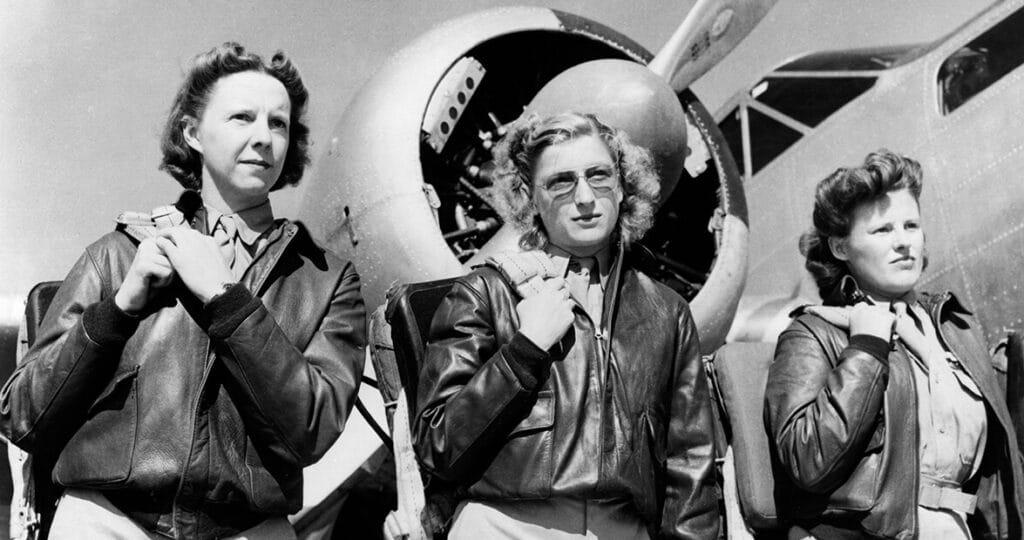Piracy has long been a domain dominated by men, but history reveals that many formidable women also sailed the high seas. These women defied societal norms, took on leadership roles, and left an indelible mark on maritime history. This comprehensive article explores the lives and legacies of seven of the most notable female pirates, from ancient times to the early modern period, delving into the myths surrounding piracy, the role of women in maritime activities, and battles fought by these extraordinary women.

Chapter 1: Myths and Realities of Piracy
The Romanticized Pirate Image: Popular culture often portrays pirates as swashbuckling heroes or ruthless villains, but the reality of piracy is far more nuanced. The romanticized image of the pirate, complete with eye patches, peg legs, and treasure maps, owes much to literature and film, particularly works like Robert Louis Stevenson’s “Treasure Island” and Disney’s “Pirates of the Caribbean.”
Pirate Codes and Democracy: Contrary to the chaotic image, many pirate crews operated under strict codes of conduct, known as articles, which outlined the division of loot, compensation for injuries, and other rules. Some pirate ships even practiced a form of democracy, with captains elected by the crew and decisions made by majority vote.
Women in Piracy: While history and myth often overlook women pirates, they played significant roles in many pirate crews. These women were not just exceptions but integral to pirate societies, challenging the patriarchal norms of their time.
Chapter 2: The Role of Women in Maritime Activities
Women Sailors and Pirates: Throughout history, women have participated in maritime activities, often disguising themselves as men to serve on ships. Female pirates like Anne Bonny and Mary Read exemplify this trend, joining pirate crews and fighting alongside their male counterparts.
Merchants and Privateers: Women also engaged in maritime commerce and privateering. Privateers, who were authorized by governments to attack enemy ships, included notable women like Lady Mary Killigrew, who combined piracy with legitimate maritime trade.
Influence on Maritime Law: Women’s involvement in piracy and maritime activities influenced legal and social norms. The presence of women on ships challenged existing laws and customs, leading to changes in maritime regulations and practices.



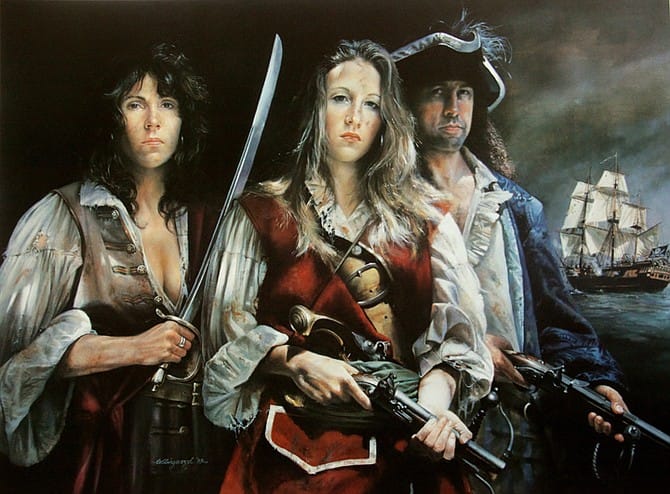
Chapter 3: Historically Fought Battles by Women
Queen Teuta of Illyria: Queen Teuta’s fleets engaged in numerous battles against Roman forces, disrupting trade routes and challenging Roman naval supremacy. Her defiance led to the Illyrian Wars, a series of conflicts that ultimately resulted in her defeat but left a lasting impact on Roman maritime policy.
Alfhild, the Norse Pirate Maiden: Alfhild’s legendary exploits include raiding Scandinavian coasts and engaging in naval battles with rival pirate crews and local authorities. Her story reflects the martial culture of the Vikings, where women could become warriors and leaders.
Jeanne de Clisson, the Lioness of Brittany: Jeanne de Clisson’s pirate fleet, known for its black ships with red sails, terrorized French vessels in the English Channel. Her relentless vendetta against the French crown involved numerous naval skirmishes and attacks on merchant ships.
Anne Bonny and Mary Read: Anne Bonny and Mary Read fought in several battles alongside Calico Jack Rackham’s crew. Their combat skills and bravery were noted during engagements with British naval forces, ultimately leading to their capture and trial.
Ching Shih and the Red Flag Fleet: Ching Shih’s Red Flag Fleet engaged in numerous battles with the Qing Dynasty’s navy, Portuguese forces, and rival pirate fleets. Her strategic acumen and strict code of conduct enabled her to maintain control over one of the largest pirate fleets in history.
Grace O’Malley, the Pirate Queen of Ireland: Grace O’Malley led her clan’s fleet in raids against English and rival Irish forces. Her naval battles included attacks on English garrisons and confrontations with the powerful English navy, showcasing her tactical prowess and leadership.
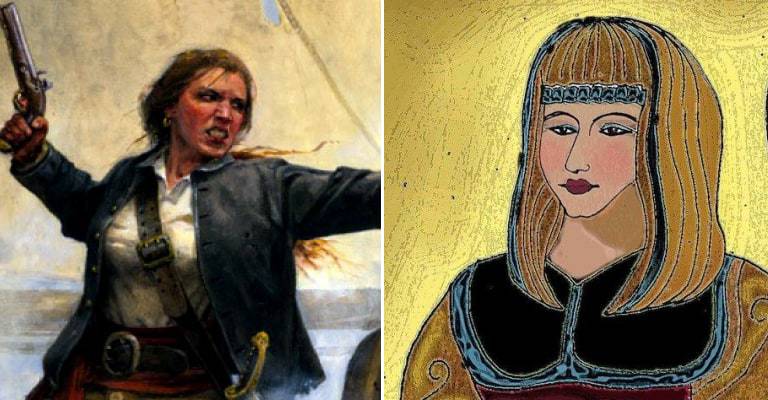
Chapter 4: Queen Teuta of Illyria (ruled c. 231-227 BCE)
Introduction: Queen Teuta of Illyria was one of the earliest recorded female pirates. As a ruler who turned to piracy, she represented a formidable force in the Adriatic Sea during the 3rd century BCE.
Early Life and Ascendancy: Teuta, the widow of King Agron, inherited the throne of Illyria. Unlike many of her contemporaries, she embraced piracy as a state-sanctioned activity. Her reign marked a period of aggressive expansion and maritime dominance.
Pirate Activities: Teuta’s fleets disrupted Roman trade routes, leading to significant conflicts with the burgeoning Roman Republic. Her ships attacked merchant vessels, exacting tolls and plundering goods, which bolstered the Illyrian economy but provoked Roman ire.
Conflict with Rome: Her aggressive tactics provoked a Roman response, culminating in the Illyrian Wars, which eventually led to her downfall. The Romans launched a military campaign to subdue Illyria, resulting in Teuta’s defeat and the imposition of Roman rule.
Legacy: Despite her defeat, Teuta’s reign is remembered for her bold defiance against one of history’s most powerful empires. Her story highlights the complex interplay between piracy, politics, and power in the ancient world.
Chapter 5: Alfhild, the Norse Pirate Maiden (circa 9th century AD)
Introduction: Alfhild was a legendary Norse pirate known for her adventurous spirit and combat prowess.
Myth and Reality: While much of her story is steeped in legend, it reflects the Norse culture’s valorization of warrior women. Alfhild’s tale, preserved in sagas and folklore, blurs the lines between myth and history, embodying the archetype of the shieldmaiden.
Life as a Pirate: According to sagas, Alfhild disguised herself as a man and led a crew of female pirates, raiding along the Scandinavian coasts. Her exploits included daring assaults on coastal settlements and confrontations with rival pirate bands.
Confrontation and Marriage: Her exploits caught the attention of Prince Alf, leading to a dramatic confrontation and eventual marriage. The story of Alfhild and Alf symbolizes the tension between independence and societal expectations in Viking culture.
Cultural Impact: Alfhild’s tale has endured in Norse mythology, symbolizing the fierce independence and martial skill of Viking women. Her story has inspired countless retellings, reflecting the enduring fascination with female warriors.
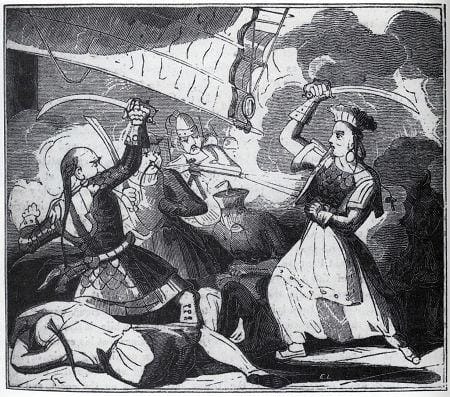
Chapter 6: Jeanne de Clisson (1300-1359)
Introduction: Known as the Lioness of Brittany, Jeanne de Clisson was a French noblewoman who turned to piracy to avenge her husband’s execution.
Tragic Beginnings: Her husband, Olivier de Clisson, was executed by the French King, prompting Jeanne to seek revenge. This personal tragedy transformed Jeanne from a noblewoman into a fearsome pirate.
Pirate Fleet: Jeanne outfitted three warships, famously painted black with red sails, and targeted French vessels. Her fleet became known for its ferocity and efficiency in naval combat.
Relentless Vendetta: Her relentless attacks on French ships earned her a fearsome reputation and disrupted French maritime activities. Jeanne’s piracy was driven by a personal vendetta, making her a unique figure in the annals of piracy.
End of Piracy: After several years of piracy, Jeanne retired and lived the rest of her life in relative obscurity. Her decision to leave piracy was influenced by changing political dynamics and personal considerations.
Legacy: Jeanne de Clisson’s story is one of vengeance, resilience, and determination, highlighting the lengths to which one woman went to avenge a personal injustice. Her legacy endures as a symbol of defiance and revenge.
Chapter 7: Anne Bonny (1697-1720)
Introduction: Anne Bonny is one of the most famous female pirates of the Caribbean, known for her fierce temperament and daring exploits.
Early Life: Born in Ireland, Anne moved to the New World, where she became involved in piracy through her relationship with pirate Calico Jack Rackham. Her rebellious nature and adventurous spirit set her apart from societal norms.
Pirate Career: Anne fought alongside male pirates, demonstrating exceptional courage and combat skills. Her involvement in raids and battles showcased her as a formidable pirate in her own right.
Capture and Trial: Captured by the British Navy, Anne and her fellow pirate Mary Read were tried and sentenced to death, though Anne’s fate remains a mystery. Her trial highlighted the gender dynamics of piracy and the legal system’s approach to female pirates.
Myth and Reality: Anne Bonny’s life has been romanticized in popular culture, but historical records affirm her role as a formidable pirate. Her story has inspired numerous fictional portrayals, blending fact and myth.
Legacy: Her story continues to captivate audiences, symbolizing the rebellious spirit of piracy. Anne Bonny remains an iconic figure in pirate lore, representing the challenges and possibilities for women in a male-dominated world.
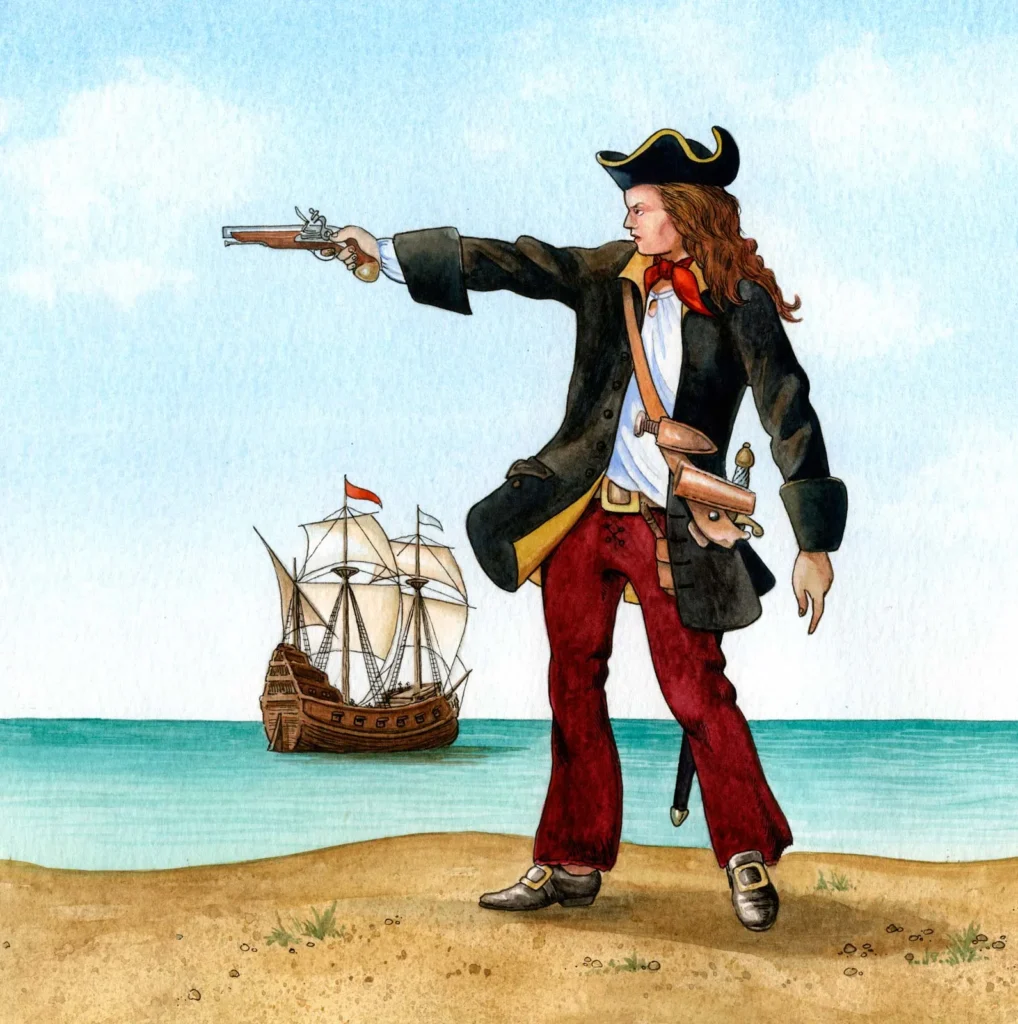
Chapter 8: Mary Read (1685-1721)
Introduction: Mary Read, often associated with Anne Bonny, was another notorious female pirate of the early 18th century.
Disguised Beginnings: Mary spent much of her life disguised as a man, which allowed her to join the British military and later, a pirate crew. Her ability to navigate different identities speaks to her resourcefulness and determination.
Pirate Life: She joined Calico Jack Rackham’s crew and became known for her bravery in battle. Mary’s combat skills and strategic acumen made her a valuable member of the crew.
Capture and Trial: Like Anne Bonny, Mary was captured and tried for piracy. She died in prison, likely of fever, leaving behind a legacy of courage and defiance.
Gender and Identity: Mary Read’s story raises intriguing questions about gender roles and identity in the early modern period. Her life challenges conventional narratives and highlights the fluidity of gender in historical contexts.
Legacy: Her life and exploits remain a testament to the fluidity of gender and the possibilities of defying societal norms. Mary Read’s story continues to inspire and provoke thought about the roles of women in history.
Chapter 9: Ching Shih (1775-1844)
Introduction: Ching Shih, a Chinese pirate leader, commanded one of the largest and most powerful pirate fleets in history.
Early Life: Originally a Cantonese prostitute, Ching Shih married the pirate Zheng Yi and took over his fleet after his death. Her rise from humble beginnings to pirate queen exemplifies her extraordinary leadership and strategic skills.
Commanding the Red Flag Fleet: Under her leadership, the Red Flag Fleet grew to over 300 ships and 20,000 pirates. Ching Shih’s ability to maintain control over such a vast and diverse fleet was a testament to her organizational prowess.
Code of Conduct: Ching Shih implemented a strict code of conduct, ensuring discipline and loyalty among her pirates. Her rules covered everything from the division of loot to the treatment of captives, creating a cohesive and effective fighting force.
Conflict and Negotiation: She successfully negotiated amnesty with the Qing Dynasty, retaining her wealth and power. Ching Shih’s diplomatic skills allowed her to transition from piracy to a respected position within Chinese society.
Legacy: Ching Shih’s story is remarkable for her strategic acumen and ability to maintain control over such a vast and unruly force. Her legacy endures as one of the most successful and influential pirates in history.

Chapter 10: Grace O’Malley (c. 1530-1603)
Introduction: Grace O’Malley, or Gráinne Mhaol, was an Irish pirate and chieftain who challenged English authority in Ireland.
Early Life and Maritime Skills: Born into a seafaring family, Grace commanded ships and led raids along the Irish coast. Her maritime skills and leadership qualities were honed from a young age, setting the stage for her later exploits.
Conflict with England: Her defiance of English rule brought her into direct conflict with Queen Elizabeth I. Grace’s raids on English settlements and ships made her a thorn in the side of the English administration in Ireland.
Meeting with the Queen: Grace famously negotiated with Elizabeth I, securing the release of her sons and the return of her lands. This meeting between two powerful women highlighted the complex political landscape of the time.
Pirate and Politician: Grace’s life straddled the worlds of piracy and politics, showcasing her as a formidable leader and strategist. Her ability to navigate both spheres speaks to her intelligence and adaptability.
Legacy: She is celebrated as a symbol of resistance against colonial rule and a pioneer of female leadership in a patriarchal society. Grace O’Malley’s legacy continues to inspire as a testament to the power and potential of women in positions of authority.

Conclusion
The stories of these seven women illustrate the diverse motivations and methods of female pirates throughout history. From avenging personal losses to commanding vast fleets, these women navigated the treacherous waters of piracy with bravery and cunning. Their legacies continue to inspire and challenge our understanding of gender roles in history. The myths and realities of piracy, the roles of women in maritime activities, and the battles they fought reveal a rich tapestry of courage, defiance, and resilience that transcends time and culture.






